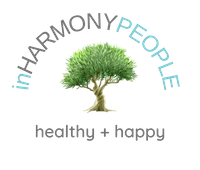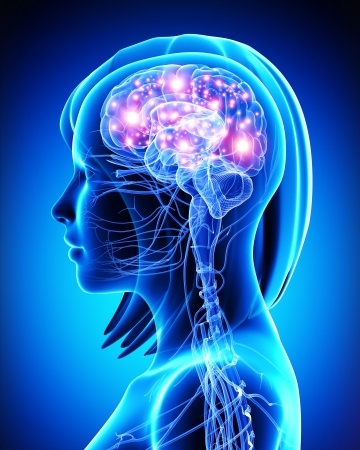http://online.wsj.com/news/articles…0.html?mod=WSJ_hpp_MIDDLENexttoWhatsNewsForth
The Debate Over Juice Cleanses and Toxin Removal
How much do restricted diets and other techniques help? How badly do we need to detox?
Some drink only vegetable juice. Others soak in Epsom salts. It’s all in the pursuit of ridding the body of months or years of accumulated toxins, said to be the cause of fat, fatigue, diabetes, memory problems and countless other conditions.
The question isn’t just whether these techniques work. It’s whether the body is overwhelmed by toxins to begin with.
The promises of liquid cleanses and other techniques have attracted legions of followers, celebrity endorsers and millions in venture capital funds. The trend has helped supercharge the U.S. diet industry, which passed $60 billion in sales last year. It has also made carrying gunky green juice a status symbol in fitness circles.
Consuming more vegetables is great, mainstream doctors and nutritionists agree. But they dismiss the detox claims as a confusing jumble of science, pseudoscience and hype. They argue that humans already have a highly efficient system for filtering out most harmful substances—the liver, kidneys and colon.
“If you’re confused, you understand the issue perfectly,” says Edward Saltzman, an associate professor at Human Nutrition Center on Aging at Tufts University.
“Nobody has ever been able to tell me what these toxins are,” says Donald Hensrud, an internist and nutrition specialist at the Mayo Clinic in Rochester, Minn.
Some detox regimens rely on what could be dangerous levels of calorie restriction if followed for long periods, these experts say. Other versions advocate “what many of us already recommend—eating more fruits and vegetables and fewer refined carbohydrates,” says Dr. Hensrud.
Detox proponents define toxins very broadly. Mark Hyman, a physician and author of six best-selling diet books, says the biggest toxic threats come from the American diet itself. “We are eating pharmaceutical doses of sugar and flour,” which have overwhelmed the liver’s ability to cope, says Dr. Hyman. He points to the overabundance of Americans with fatty liver disease, which leads to obesity, insulin resistance and other metabolic disorders.
He says Americans are also being assaulted by heavy metals (including mercury from large fish and old dental fillings) and endocrine-disrupting chemicals (including Bisphenol A in makeup and credit-card receipts) as well as “spiritual toxins,” such as loneliness and hostility. But he says people reduce their exposure and enhance their ability to excrete such toxins with the right balance of foods, vitamins and minerals.
![[IMG]](http://si.wsj.net/public/resources/images/PJ-BT538_TOXINS_DV_20140303162431.jpg)
This decades-old cleanse plan has gained traction again in recent years.
Dr. Hyman’s latest book, “The Blood Sugar Solution 10-Day Detox Diet,” published in February, recommends avoiding all sugar, grains, dairy products, legumes, alcohol, caffeine and processed foods. Instead, followers consume a fruit-and-protein shake in the morning, then vegetables and lean protein for lunch and dinner.
He also suggests they take a long list of supplements and drink water with PGX, a form of fiber that expands in the stomach, before every meal. The combination resets the metabolism and cleans out the digestive system, Dr. Hyman says. He has also argued that a detox bath with Epsom salts each night helps remove heavy metals through the skin and reduces stress.
Liver specialists say that up to 20% of adults have some form of fatty liver disease, in which excess fat in the liver leads to inflammation, scar tissue and eventually liver failure. Some cases are due to alcohol abuse. Genetics, hepatitis, autoimmune disease and medication use also play a role. It isn’t clear whether fatty liver causes obesity or vice versa.
Dr. Hyman says most doctors are “hopelessly ignorant” about the impact of toxins on the body, but he concedes that further research is needed to better understand the mechanisms. “Has anyone done a comprehensive study and measured the body’s toxic burden before and after this approach? No,” he says. “Do we need something like that? Yes.”
Both camps agree that taking a break from alcohol and caffeine even temporarily can improve one’s health, starting with improved sleep. Eliminating alcohol can also lower liver enzymes that raise alcohol tolerance in heavy drinkers. That change can also be a good test of dependency—if you can’t quit for even a few days, that’s a red flag. Kicking caffeine can lower blood pressure, but doing so abruptly can cause headaches and irritability, so some diets recommend tapering down ahead of time.
Other regimens counsel cutting out entire food groups—such as wheat and dairy—sometimes for 30 days or longer. Some followers say they feel more energetic, more clearheaded and less gassy as a result.
That may be because they have an unrecognized lactose intolerance or sensitivity to gluten, a protein found in wheat. Scientists don’t typically classify such foods as toxins. “But if eliminating it from your diet makes you feel better, it may be a kind of personal toxin,” says Dr. Saltzman of Tufts. “As long as the rest of your diet is sustainable and nutritionally adequate, that’s fine.”
But some cleanses are often little more than fasting regimens. The “master cleanse,” devised to treat ulcers in the 1940s, consists of six to 12 glasses of water mixed with lemon juice, cayenne pepper and maple syrup, with a laxative at bedtime but no other food for up to 10 days. It leaves many nutrition experts scratching their heads. Dr. Saltzman says a variety of medicinal properties have been linked with lemon juice and that cayenne can help soothe lingering pain from shingles. “The real puzzler is the maple syrup,” he says.
Peter Glickman, who helped revive the cleanse in a 2004 book, writes that the first three days are the hardest and that serenity, euphoria and mental clarity set in after about Day Eight.
The Mayo Clinic’s Dr. Hensrud says it could be incipient starvation instead. “But once you reintroduce a normal diet, everything goes back to normal,” he says.
The bevy of prepackaged juice cleanses that have burst on the market in recent years incorporate fruits, vegetables and protein into their detox regimens. BluePrintCleanse’s program, for example, consists of six 16-ounce drinks a day, in precise order, for three days.
Elaine McCormick, a creative director at a Manhattan advertising firm, says she has gone on BluePrintCleanses four or five times. “Whether I’m cleansing my liver or colon, I don’t know. But my body feels better. I’m eating vegetables and getting calcium,” she says.
Many cleanse aficionados are health-conscious anyway. They say periodically restricting their intake helps reboot their system. “It breaks your relationship with food,” says Anne Pollack, a former chief investment officer at a large insurance company, who does a detox twice a year for three weeks with a nutrition counselor. She gives up all wheat, dairy, sugar, soy, chicken, red meat and alcohol and eats only brown rice, fruits, green vegetables, salmon and supplements such as milk thistle. After that, she says, “I have an amazing amount of energy. My skin is soft. My hair is shiny and my nails grow like crazy.”
Some packaged juice cleanses contain considerable amounts of sugar, leading some proponents to grind up their own fruit and vegetable concoctions at home. Some nutritionists recommend using a blender rather than a juicer to retain more pulp, because a liquid diet without fiber can slow down digestion. That’s partly why some juice cleanses advise using a colon cleanse before and after to fully flush out the intestinal tract.
Most gastroenterologists, however, advise against using supplements, laxatives, enemas and irrigation devices that purport to remove accumulated waste clogging up the colon. It seldom exists, doctors say, and would-be detoxers can become constipated by using laxatives too often.
Keeping the digestive tract moving normally is another reason many experts say simply eating more fruit and vegetables makes more sense than a drastic temporary regimen. New York nutritionist Bonnie Taub-Dix calls it “clean eating.” She advises: “Skip the cleanse. Have your green smoothie as a snack in the afternoon and then skip the vending machine.”








